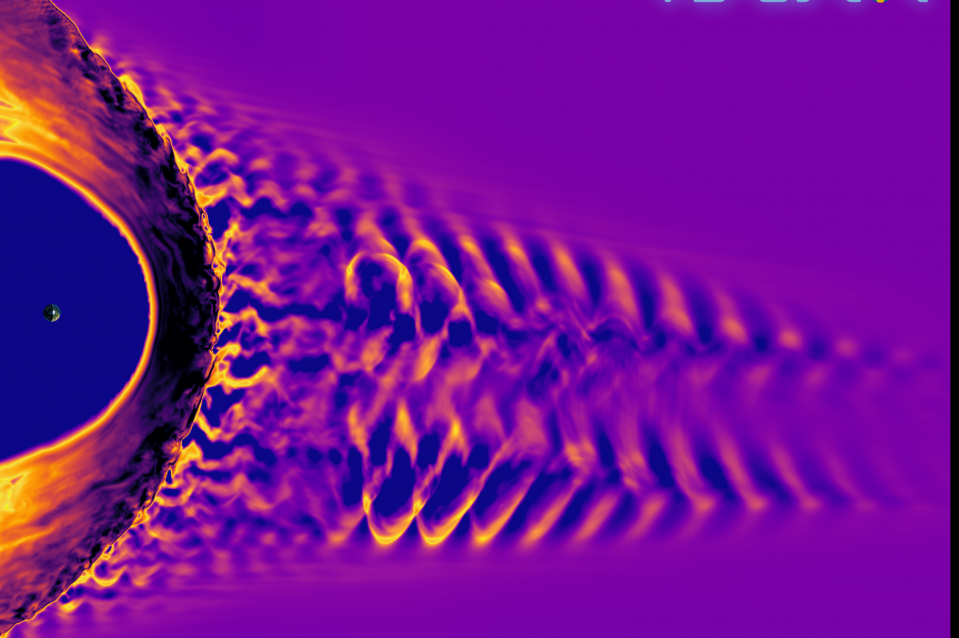


Our planet’s magnetic field is “singing.” The European Space Agency just released a recording of the frequencies generated as a solar storm collided with Earth’s magnetic field. It was released alongside new findings published in Geophysical Research Letters this week.
What is it? Solar storms are the eruption of electrically charged particles ejected from the sun. When those particles reach Earth, they come into contact with the planet’s magnetic field. The first region of the magnetic field they hit is called the foreshock. The interactions of the particles with the foreshock causes the release of complex magnetic waves.
How was it recorded? ESA’s Cluster mission was able to record these magnetic waves as they scatter into higher frequencies. When scientists covert these frequencies into audible signals, the result is the ghostly sound that you can hear below. When there are no solar particles to contend with, these magnetic waves oscillate on a single frequency and so would convert into a very different, mellower “song.”
Cluster (technically Cluster II, as the first mission was lost in a launch failure) is a set of four spacecraft launched in 2000 and positioned out in Earth’s magnetosphere to study its interaction with solar wind. The spacecraft regularly venture out into the foreshock. The new findings and recordings were made from an analysis of data collected during six solar storm collisions observed from 2001 to 2005.
So what? Earth’s magnetic field is the planet’s primary line of defense against harmful solar activity that could knock out many orbital and terrestrial instruments and power grids. The authors of the latest study used computer simulations created by a model called Vlasiator to illustrate how changes in the foreshock affects how the energy generated by solar storm interactions propagates down to Earth.
As it turns out, the disturbances felt at the foreshock are much more complex than the research team anticipated, presenting another uncertainty that could affect how we forecast potential space weather threats. As usual, we need better data. Turns out these eerie recordings are less a novelty soundtrack and more an urgent alarm for us to do more to study these processes.